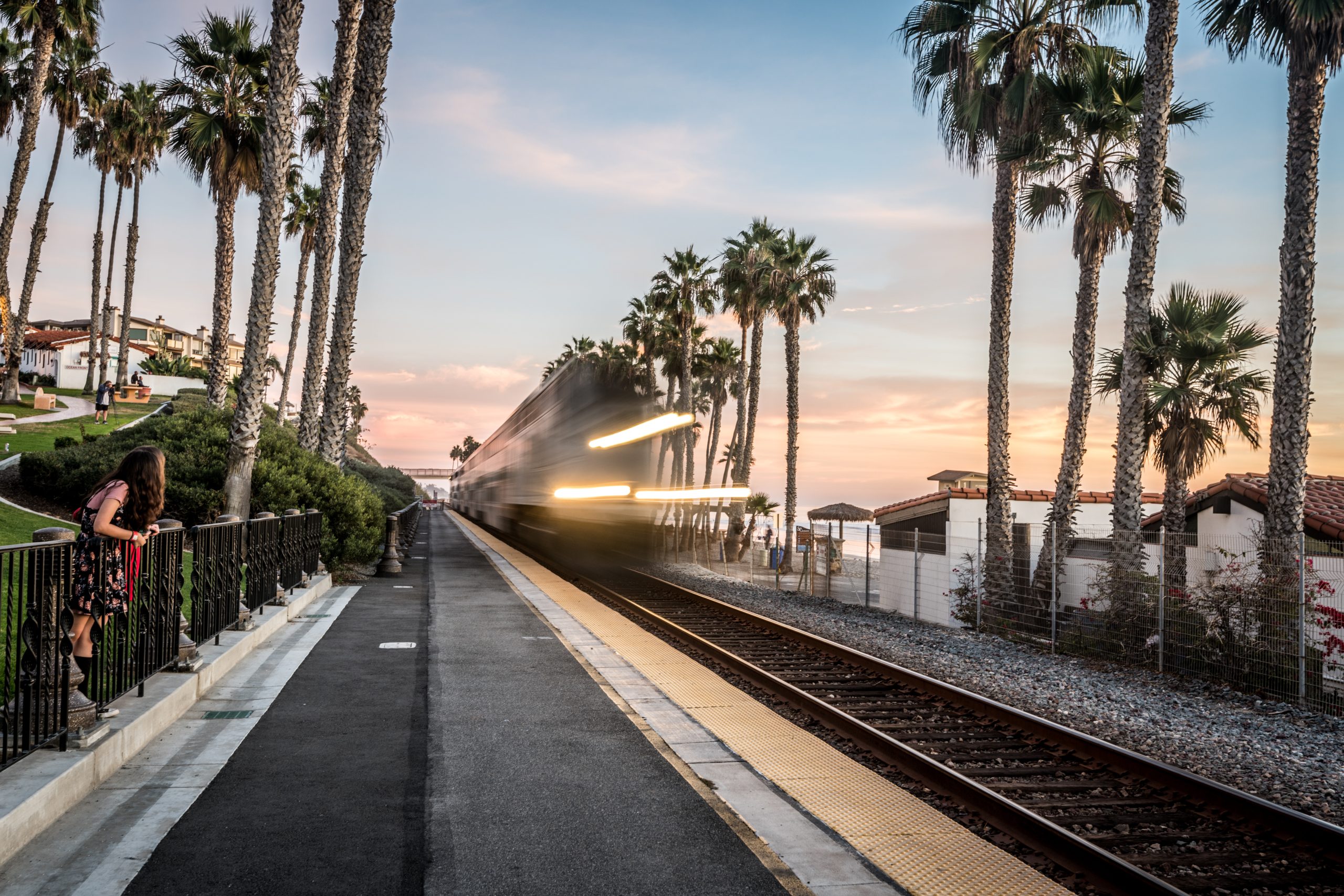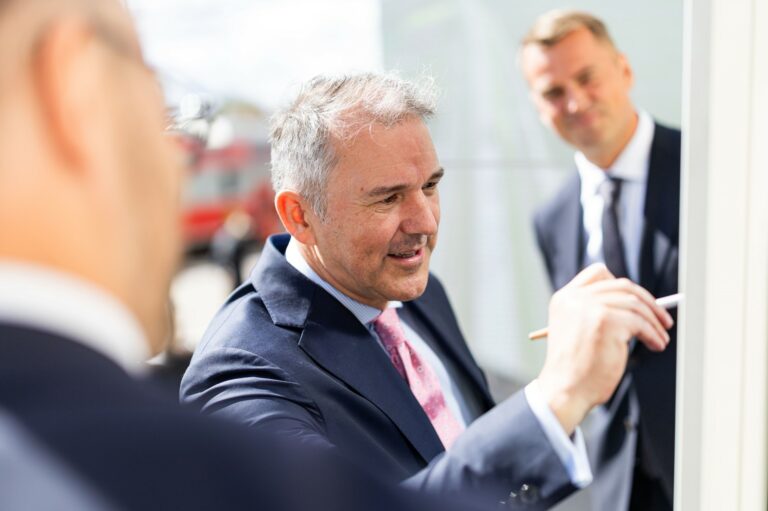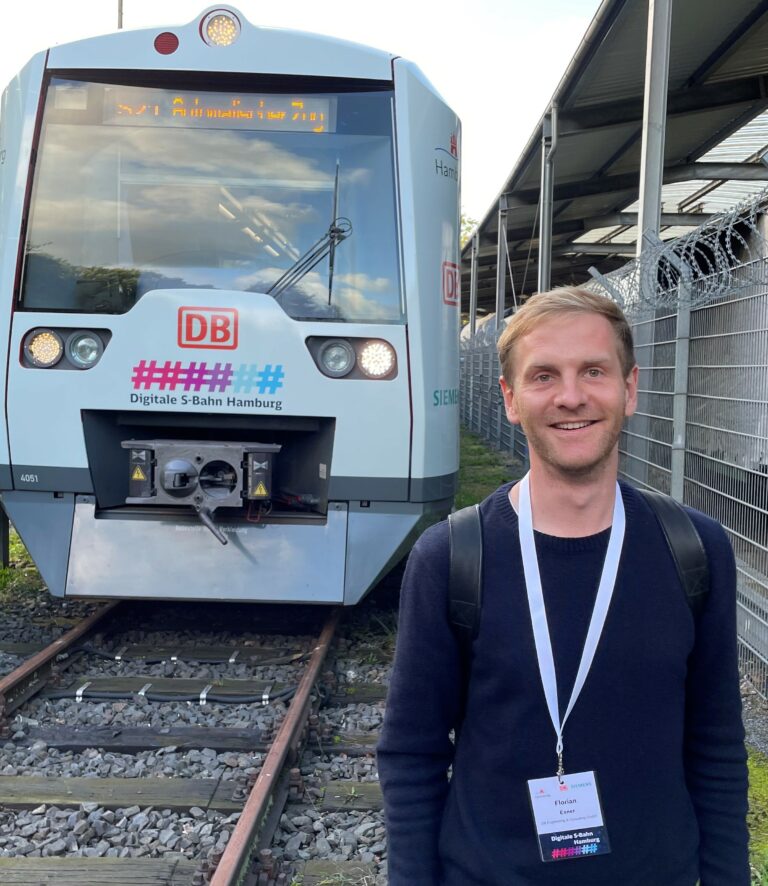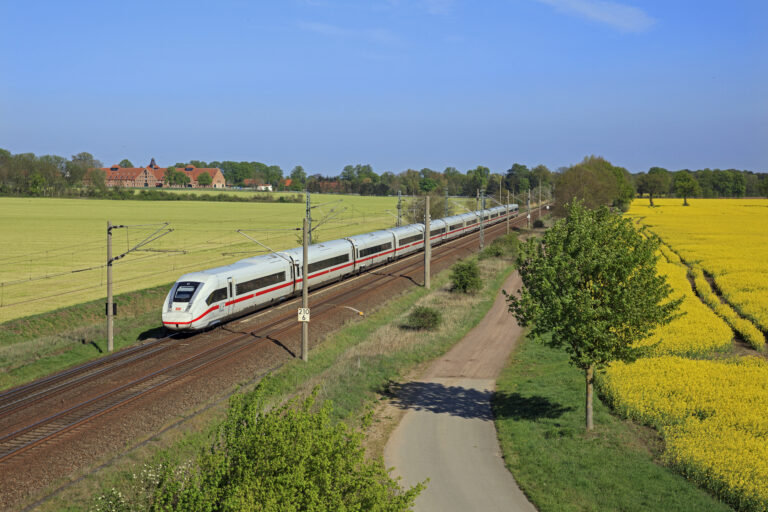The U.S. railroads connect the Atlantic and Pacific coasts via the country’s vast rail network of approximately 225,000 km (approx. 140,000 miles). Only less than 1% of this network is electrified. A fleet of approximately 40,000 locomotives, almost all of them diesel-electric, hauls freight and passengers across the country. The U.S. Environmental Protection Agency has limited the quantity of criteria air pollutants that can be emitted from railway motive power vehicles. DB E.C.O. North America* rises to the challenge.
The latest standard, Tier 4, was introduced in 2015 and is comparable to the European Stage IV standard. In addition, several states have ambitious greenhouse gas (GHG) emissions reduction goals, and the Biden administration plans to introduce more stringent national targets.
Strategy development and implementation assistance
Traditional wayside electrification is not a feasible solution for most rail companies in the U.S. due to the extent of the network, its traffic density, as well as funding and economic constraints; accordingly, alternatives are required. On the path to full zero emissions, the use of renewable diesel is likely to be a very important intermediate solution for the next 10-20 years. Renewable diesel allows utilization of existing diesel engines and significant well-to-wheel GHG reductions can be achieved, typically in the range of 50 to 80 percent.
To achieve zero emissions at the point-of-use and throughout the energy supply chain, two options, batteries and hydrogen, are most promising. The comparatively high weight and large volume requirement of batteries render them more suitable for services with limited range requirements, such as switching locomotives, services where frequent recharging can be implemented, such as streetcars and light rail, and for hybrid applications where they provide power in conjunction with at least one other source.
Where longer range zero-emission (ZE) operation is required, hydrogen tends to be more suitable. Hydrogen has a higher energy density than batteries, which, combined with a refueling time and process similar to diesel, makes it an attractive solution. Hydrogen (H2) can be produced from many feedstocks, including 100% renewables, such as biomass sources, and renewable energy can be used to split water (electrolysis). Biomass has the benefit of being carbon negative, as the carbon bound by plants is retained as a solid pellet which can be used as a fertilizer. In a fuel cell, H2 reacts with oxygen (usually from air) to produce electricity and pure water as exhaust, rendering the option ZE as no harmful substances are released.
All abord the train to the future
DB E.C.O. North America is expanding its activities in the field of sustainable motive power and ZE technologies. It provides technical support for the review and acceptance of design proposals for zero-emission hydrogen motive power vehicles, assists with the identification and procurement of H2 supplies and the associated fueling infrastructure, and provides expertise to guide the design of maintenance facilities to accommodate new zero-emission vehicles.
Together with the experts at DB Engineering & Consulting, they have provided assistance to a heavy-haul rail freight company in its efforts to achieve ZE operation, supporting techno-economic analyses for several scenarios, including full wayside electrification, partial electrification with electro-diesel dual-mode locomotives combined with on-board energy storage, and battery options with varying charging strategies and the associated infrastructure.
Contact
DB Engineering & Consulting
EUREF-Campus 14
10829 Berlin
Germany






